I learned this technique from several users who [thankfully] wrote in to correct me. For years I told DIY drillers that it was impossible to to use bentonite when using two hoses for drilling fluid. I said bentonite could only be used when using a mud pump and a recirculating drilling fluid system. I stand corrected and now heartily endorse using bentonite when drilling with two water hoses. It is not as effective as it is in a re-circulating system but it definitely helps and will certainly allow you to add at least one more 10 foot stick of two inch diameter PVC pipe to your drill pipe and maybe, two. This makes a 40 foot well a realistic goal.
Bentonite is a clay that has an unusual and particularly useful characteristic. It can absorb many times its weight in water. It is useful in drilling wells because water mixed with bentonite tends to coat the walls of the hole and keep it from collapsing. Drillers call this coating a “filter cake.”
When you are using only water as a drilling fluid and you are drilling in sand, the walls of the hole will start collapsing as soon as you turn off the water. Add bentonite to the water and two things happen. Both are very helpful in drilling.
- 1. The water gets thicker. Thicker drilling fluid is more efficient at bringing the cuttings to the top of the hole. This results in more efficient evacuation of solids from the bottom of your hole.
- 2. The sandy walls of the hold solidify to a degree. Not like concrete but hard enough to seal the borehole sides. When the sandy walls of the hole solidify, we don’t have to worry about them collapsing when we stop the flow of drilling fluid. This permits us to add sections of drill pipe and even intall well screeens without having to worry about the hole collapsing.
Please take a look at the video below produced by the CETCO corporation, a producer of drilling additives. It shows the advantage of using bentonite over plain water.
Two of the most common brand names are Quik-Gel and AquaGel. Your local drilling supply house will carry it. At the supply house I shop at, it costs about $12 for a 50 pound bag of Quik-Gel.
Bentonite for drilling comes in a very, very, fine powder. It will likely be the finest powder you will ever see. It is kind of tricky to mix into water. If you are not careful it will simply clump. Several users have reported success simply by pouring it down the drillpipe but I strongly suggest thoroughly mixing it first to improve performance.
To mix the bentonite, set up a five gallon bucket near the drill site. Put about three gallons of water in a 5 gallon bucket and pour in the bentonite while you are mixing with a drill and concrete mixing bit. Pouring in the bentonite powder as you are mixing is much more effective than pouring the powder in and then mixing. Add bentonite until it the mix thickens but is still easy to pour. If you add too much it will get hard to pour.
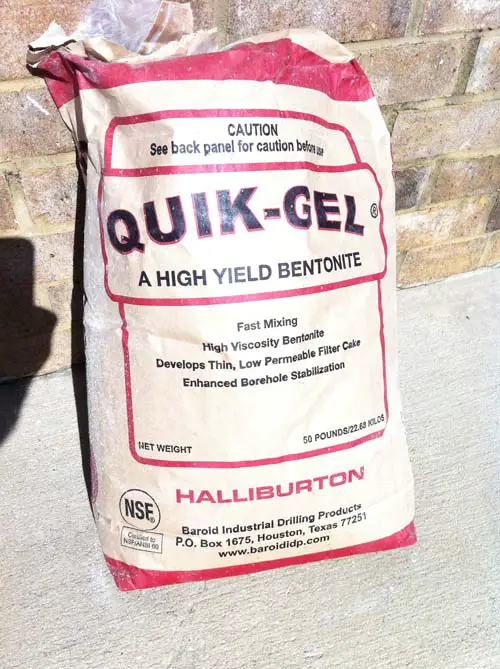
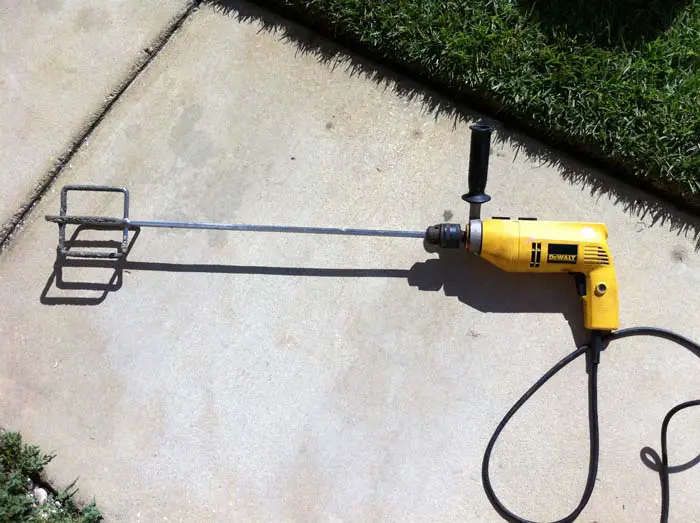
DRILL WITH CEMENT MIXER BIT
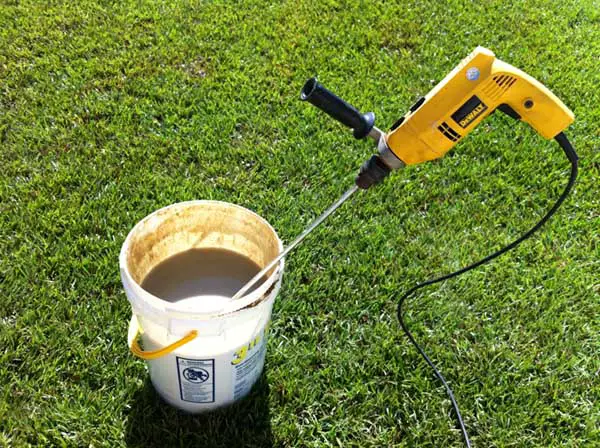
DRILL READY TO MIX BENTONITE
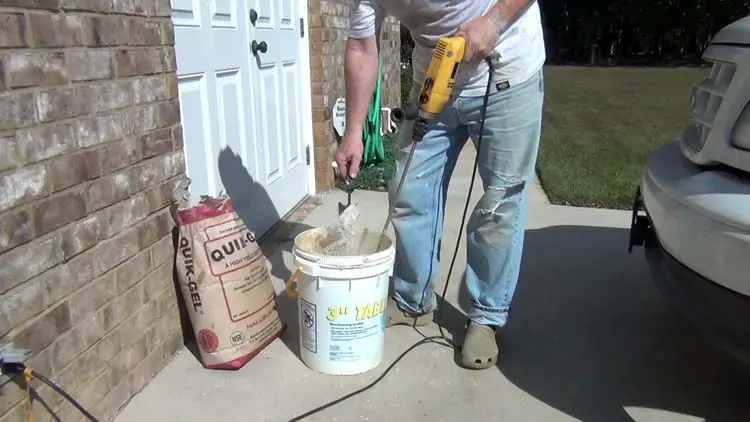
IT IS IMPORTANT TO KEEP THE MIXER RUNNING
WHILE ADDING BENTONITE
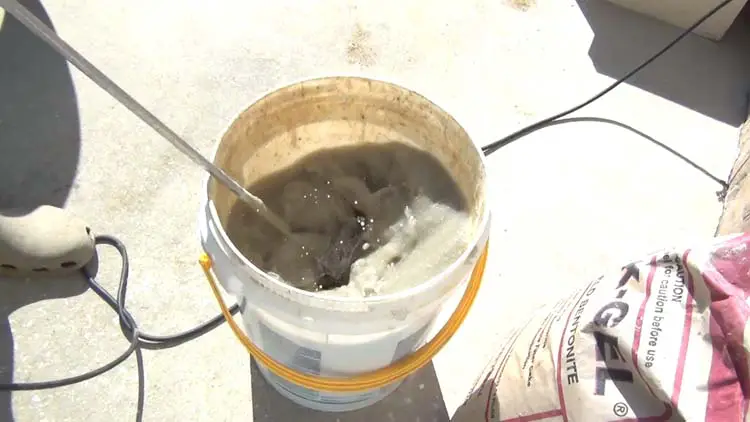
After you get it mixed, you need to get it in with the drilling fluid going down into your hole. Don’t take so long that the sand collapses on your pipe. If you are drilling with two hoses, turn the water off and then, QUICKLY:
- 1. Take the drill head off.
- 2. Pour the bentonite mix down the drillpipe. You’ll probably need a big pitcher because it is hard to pour directly from the 5 gallon bucket.
- 3. Put the drill head back on and turn the water back on.
Then start twisting the drill pipe back and forth and working it up and down in the normal manner.
I suggest that just before you add a stick of PVC at the 20 foot mark you add a bucket of bentonite mix and add another bucket at the 30 foot point. Hopefully this will get you to 40 feet mark which is plenty deep for a shallow well (a shallow well is one pumped with a suction pump, i.e. with a standing water level of 25 feet or less).
UPDATE Nov, 2012: I have revised the drillhead to permit easy insertion of bentonite mix. It is basically the same drillhead with an two inch valve added on top. To add bentonite mix, simply turn off the water, open the top valve and pour in. Then close the top valve and turn the water back on.
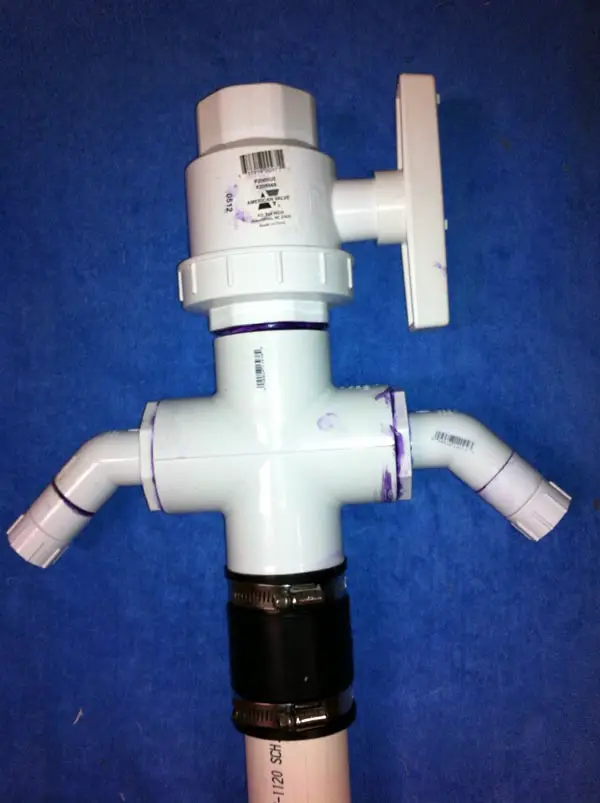
UPDATED DRILLHEAD WITH VALVE TO ADD BENTONITE
If you are using bentonite as part of a recirculating drilling fluid system, it is critical that you add the proper amount. It is easy to add too much bentonite and seal the hole to the point that water in the surrounding sand can not penetrate the well. To get the mix absolutely right, use a Marsh Funnel to calibrate your drilling fluid mix.
 drillyourownwell.com
drillyourownwell.com